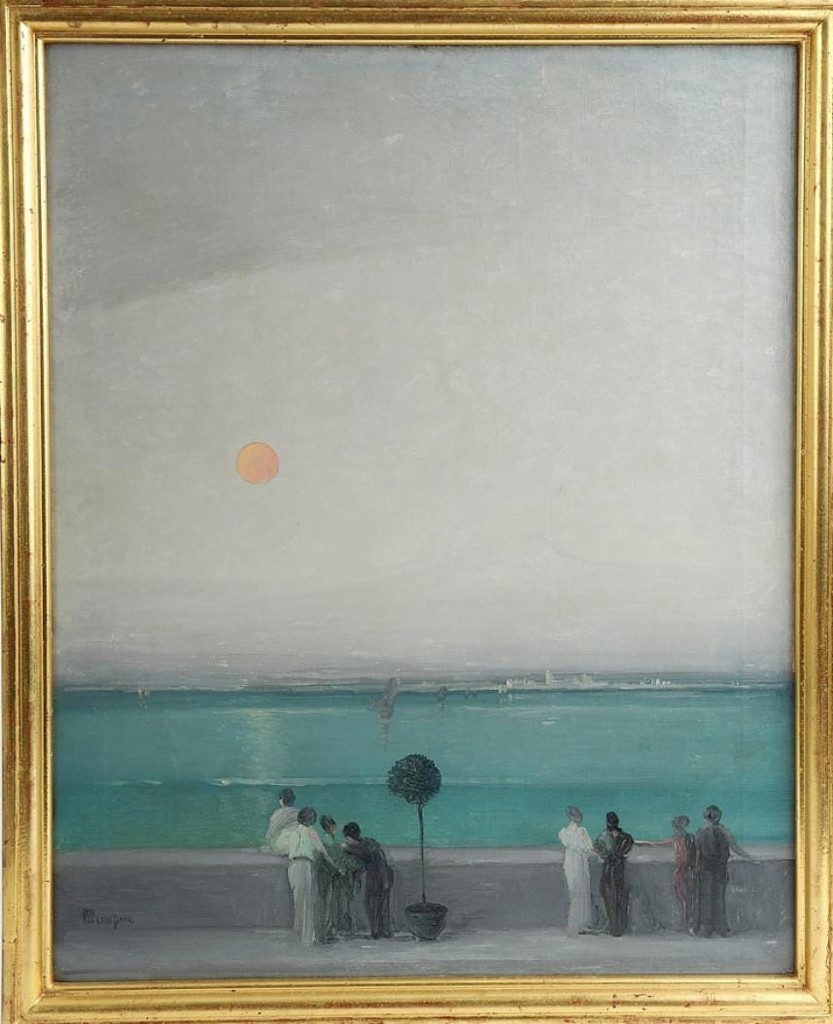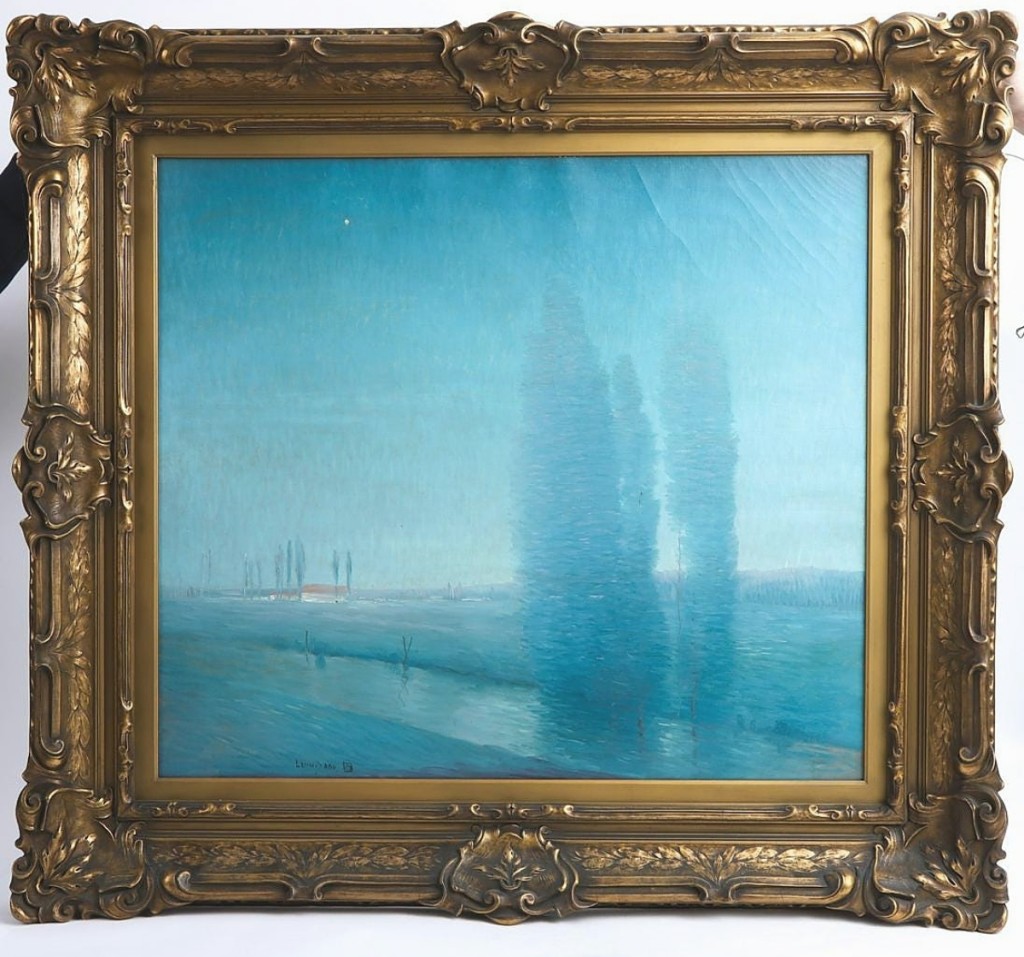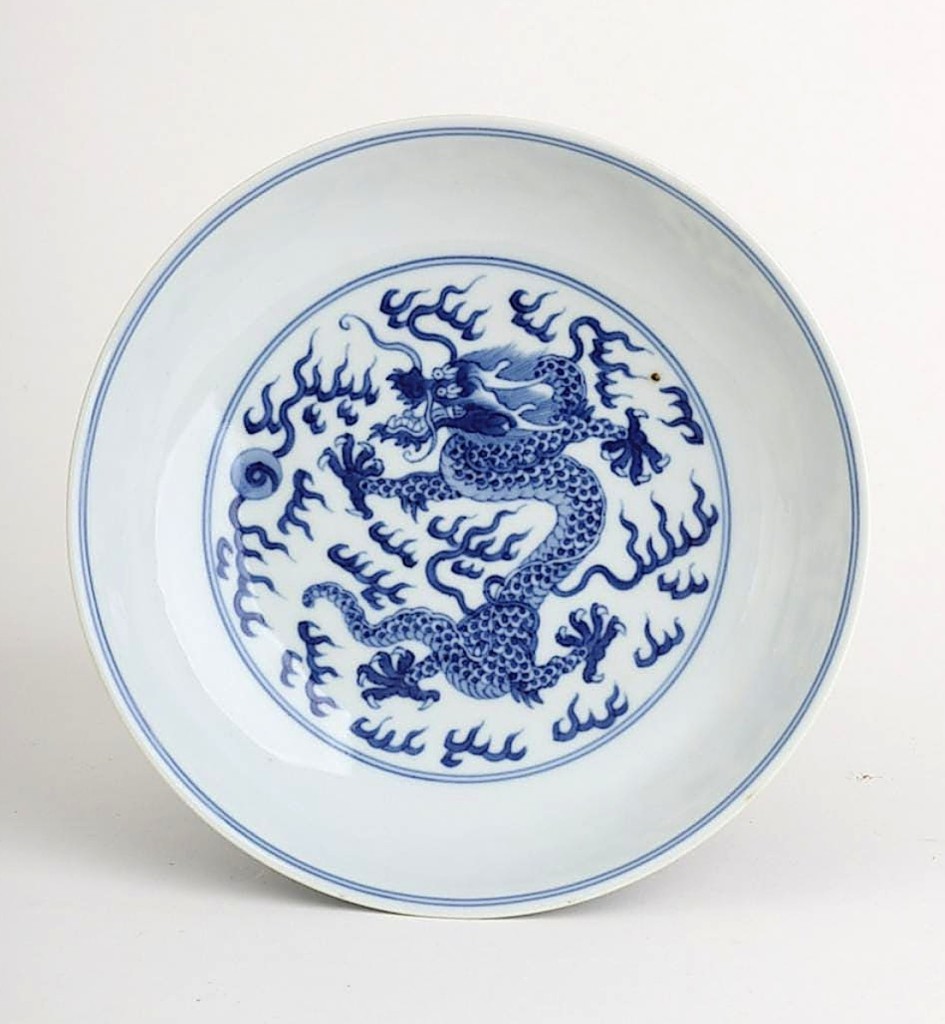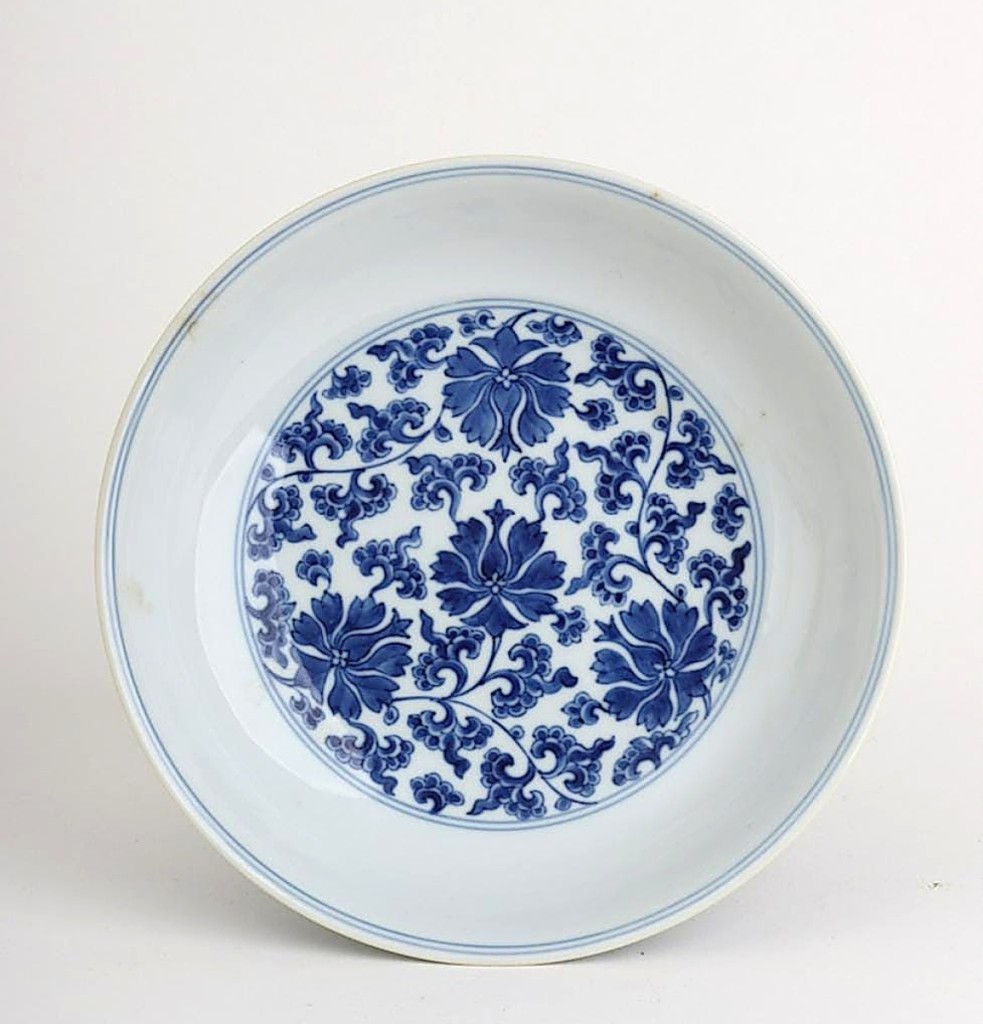
The second day of the sale was led by two works by Leon Dabo (1864-1960), an American tonalist landscape artist. Selling for $37,200 was “Along the Promenade,” possibly Venice, a signed oil on canvas measuring 30 by 24 inches.
Review by W.A. Demers, Photos Courtesy John McInnis Auctioneers
YORK, MAINE – John McInnis Auctioneers conducted a two-day sale on February 5-6 featuring the estate of John Robert Gregg Jr, son of educator, publisher, humanitarian John Robert Gregg, the inventor of the eponymous shorthand system Gregg Shorthand.
The younger Gregg was born on April 25, 1935, in New York City to John Robert Gregg and Janet Kinley Gregg, daughter of economist David Kinley. He worked briefly as an editor for the Sierra Club in San Francisco before moving to York, Maine, in 1967, where he lived the rest of his life winter, spring and fall. Summers he spent at his beloved cottage on the French River, Ontario.
The two-day auction, billed as an online onsite sale, included Gregg’s lifetime accumulation of Native American rugs, blankets and jewelry, Inuit-carved soapstone and artwork. There was also ephemera, including rare autographs, signed photographs, ancient Chinese currency, an extensive collection of Early American Pattern Glass as well as art glass jewelry, Asian porcelain, sterling silver flatware and hollowware.
Because of the older Gregg’s membership (and later twice presidency) in the National Arts Club, the fine art collection from artist members he patronized were top sellers, especially since they were being offered for the first time since they were originally purchased. The second day of the sale was led by two works by Leon Dabo (1864-1960), an American tonalist landscape artist. Selling for $37,200 was “Along the Promenade,” possibly Venice, a signed oil on canvas measuring 30 by 24 inches, signed.

Sixteen bids took Dabo’s “Flanders Evening” to $31,000. The oil on canvas measured 30 by 34 inches and was signed, titled and dated verso.
Sixteen bids took Dabo’s “Flanders Evening” to $31,000. The oil on canvas measured 30 by 34 inches and was signed, titled and dated verso.
Other artist members included Lawrence Mazzanovich (1871-1959), an American painter known for his village and seasonal landscapes. His “Fall Landscape,” an oil on canvas alive with the golds, reds and browns of the season, 30 by 30 inches, signed and framed, sold for $6,200.
A painting described as being in the manner of Edward Mitchell Bannister (1828-1901) found believers and went from a $300/600 estimate to a final price of $2,790. It was a moody scene depicting children playing in a stream with cows in the distance, and the unsigned oil on canvas measured 12 by 18 inches. Like Dabo, Bannister was a tonalist painter, predominantly of pastoral subjects. Born in Canada, he spent his adult life in New England, where he was a prominent member of the African American cultural and political communities, a member of Boston’s abolition movement and a founding member of the Providence Art Club.
Another autumn landscape, this one by Ben Foster (1852-1926) sold for $2,480, and on the first day of the sale, a sculpture by Anna Hyatt Huntington (1876-1873) brought $4,030. It was a bronze of a playful bear cub on its back, 3¼ by 4½ by 3 inches. signed and numbered 132 with Gorham Co Founders mark.

Surprising prices were attained for a couple of Chinese porcelain bowls. This imperial Jiaqing bowl, 1796-1820, with a solitary writhing dragon in the basin and dragons surrounding the outside, surpassed its $200/400 estimate to finish at $11,160.
Day one also saw some surprising prices attained for a couple of Chinese porcelain bowls. The first, an imperial Jiaqing bowl, 1796-1820, with a solitary writhing dragon in the basin and dragons surrounding the outside, 1½ by 6½ inches, surpassed its $200/400 estimate to finish at $11,160. The second, a blue and white porcelain bowl decorated with floral motifs in both basin and outside and with a $100/200 estimate, brought $9,920.
Gregg had notable Native American items in his collection. Fetching $6,200 against its $200/400 estimate was a Navajo silver squash blossom necklace set with turquoise, 24 inches not including its 2½-inch pendant. A heavy Navajo bracelet (3 troy ounces) set with three polished turquoise stones, 2 by 3 inches, was expected to bring a high of $300 but realized $2,232. Also, among a large number of Navajo rugs, one bringing the highest price, $1,860, was an example with good age and measuring 3 feet 3 inches by 9 feet 7 inches.
Included in the sale was an extensive private library of books that Gregg both collected veraciously as well as inherited from a number of allied families who lived in both Chicago and Manhattan. With subjects ranging from Canadian and Arctic exploration, Native Americans and their decorative arts, novels and poetry by William Shakespeare, Keats and Shelley, Marlowe and Chaucer, it was John Urry’s “Works of Geoffrey Chaucer,” 1721, that achieved the best price, going out at $1,860.

This blue and white porcelain bowl decorated with floral motifs in both basin and outside, with a $100/200 estimate, brought $9,920.
Musical instruments on offer included a 1912 Steinway grand piano, a Mosrite of California double neck guitar and a Fender Telecaster. The Steinway model M with satin ebony finish was bid to $5,270, and the Joe Maphis Model #2J390 double neck guitar, partially strung and in need of new pickups, took $2,108.
Additional highlights were an antique Oriental rug, 9 feet 1 inch by 13 feet 11 inches, at $2,108; a Sharps 1852 saddle ring carbine that hit $1,364; and grouping of sterling silver flatware from various makers, including Towle, many monogrammed and totaling 93 troy ounces that left the gallery at $2,232.
Prices given include the buyer’s premium as stated by the auction house. For information, www.mcinnisauctions.com or 978-388-0400.




